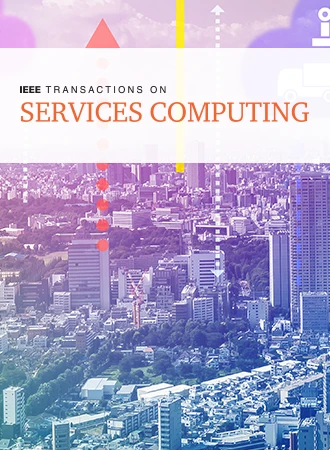DRMQ:协同边缘工业环境中增强QoS的动态资源管理
IF 5.8
2区 计算机科学
Q1 COMPUTER SCIENCE, INFORMATION SYSTEMS
引用次数: 0
摘要
在快速发展的工业环境中,人们广泛关注移动边缘计算(MEC)中的资源管理,旨在确保低延迟的QoS,然而,一些卸载到云上的任务仍然存在高延迟。此外,对于工业应用来说,高能耗、链路可靠性差和过度的处理延迟是无法忍受的。与普通服务器相比,基于Arm架构的边缘计算设备具有更低的延迟和更高的能效。这突出了对改进的异构协作边缘工业环境(CEIE)和精确的多用户QoS度量的需求。因此,我们将重点放在CEIE架构内的动态资源管理上,以更好地满足不同的工业应用,制定了一个多阶段混合整数非线性规划(MINLP)问题,以最小化系统成本。为了降低求解MINLP的计算复杂度,我们将原问题分解为多用户任务卸载、通信资源分配(CmRA)和计算资源分配(CpRA)问题。然后使用DRMQ来解决这些转换后的问题:一种集成学习优化方法,将无模型、基于优先级经验重放的双深度Q-Network (iDDQN)与基于模型的优化相结合,加速q值函数的收敛速度并减少训练时间。大量的仿真结果表明,我们提出的优化方案可以使加权系统平均成本降低至少43.168%。此外,实验表明,该算法在实际应用中可以将系统平均成本降低至少42.650%,优于现有方法。本文章由计算机程序翻译,如有差异,请以英文原文为准。
DRMQ: Dynamic Resource Management for Enhanced QoS in Collaborative Edge-Edge Industrial Environments
In the fast-developing industrial environments, extensive focus on resource management within Mobile Edge Computing (MEC) aims to ensure low-latency QoS, however, some tasks offloaded to the cloud still experience high latency. Additionally, high energy consumption, poor link reliability, and excessive processing delays are intolerable for industrial applications. Compared to general servers, edge computing devices based on Arm architecture exhibit lower latency and higher energy efficiency. This highlights the need for improved heterogeneous Collaborative Edge-Edge Industrial Environments (CEIE) and precise multi-user QoS metrics. Thus, we focus on dynamic resource management within the CEIE architecture to better satisfy diverse industrial applications, formulating a multi-stage Mixed Integer Nonlinear Programming (MINLP) problem to minimize system costs. To reduce the computational complexity of solving the MINLP, we decompose the original problem into multi-user task offloading, Communication Resource Allocation (CmRA), and Computational Resource Allocation (CpRA) problems. These transformed problems are then tackled using DRMQ: an integrated learning optimization approach that combines model-free, priority experience replay-based Double Deep Q-Network (iDDQN) with model-based optimization, accelerating the Q-value function's convergence speed and reducing training time. Extensive simulations show that our proposed optimization scheme can reduce the average weighted system cost by at least 43.168% . Moreover, testbed experiments demonstrate that the proposed algorithm can reduce the average system cost by at least 42.650% in real-world applications, outperforming existing methods.
求助全文
通过发布文献求助,成功后即可免费获取论文全文。
去求助
来源期刊

IEEE Transactions on Services Computing
COMPUTER SCIENCE, INFORMATION SYSTEMS-COMPUTER SCIENCE, SOFTWARE ENGINEERING
CiteScore
11.50
自引率
6.20%
发文量
278
审稿时长
>12 weeks
期刊介绍:
IEEE Transactions on Services Computing encompasses the computing and software aspects of the science and technology of services innovation research and development. It places emphasis on algorithmic, mathematical, statistical, and computational methods central to services computing. Topics covered include Service Oriented Architecture, Web Services, Business Process Integration, Solution Performance Management, and Services Operations and Management. The transactions address mathematical foundations, security, privacy, agreement, contract, discovery, negotiation, collaboration, and quality of service for web services. It also covers areas like composite web service creation, business and scientific applications, standards, utility models, business process modeling, integration, collaboration, and more in the realm of Services Computing.
 求助内容:
求助内容: 应助结果提醒方式:
应助结果提醒方式:


